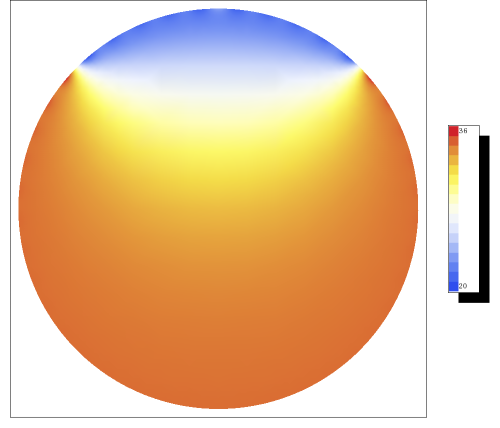11.4: Modelling the eye–revisited
( \newcommand{\kernel}{\mathrm{null}\,}\)
Let me return to my model of the eye. With the function Pn(cosθ) as the solution to the angular equation, we find that the solutions to the radial equation are
R=Arn+Br−n−1.
The singular part is not acceptable, so once again we find that the solution takes the form
u(r,θ)=∞∑n=0AnrnPn(cosθ)
We now need to impose the boundary condition that the temperature is 20∘ C in an opening angle of 45∘, and 36∘ elsewhere. This leads to the equation
∞∑n=0AncnPn(cosθ)={200<θ<π/436π/4<θ<π
This leads to the integral, after once again changing to x=cosθ,
An=2n+12[∫1−136Pn(x)dx−∫112√216Pn(x)dx].
These integrals can easily be evaluated, and a sketch for the temperature can be found in figure 11.4.1.

Figure 11.4.1: A cross-section of the temperature in the eye. We have summed over the first 40 Legendre polynomials.
Notice that we need to integrate over x=cosθ to obtain the coefficients An. The integration over θ in spherical coordinates is ∫π0sinθdθ=∫1−11dx, and so automatically implies that cosθ is the right variable to use, as also follows from the orthogonality of Pn(x).


